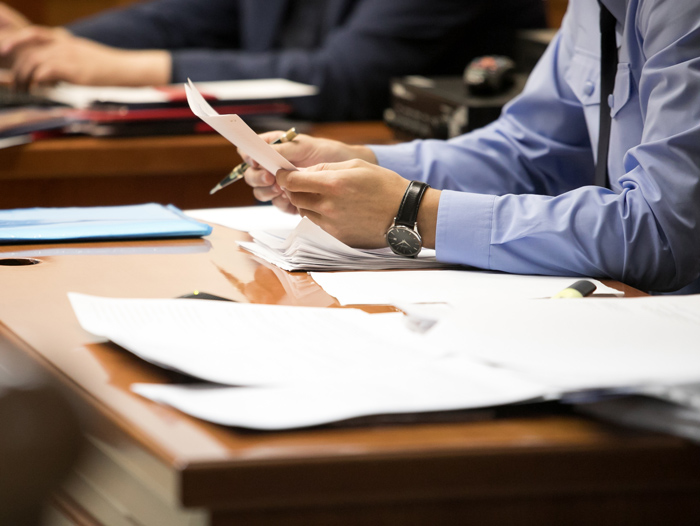Auto logout in seconds.
Continue LogoutLoneliness has become a pressing health issue, with significant negative impacts to people's mental and physical health. As loneliness increases among both young people and older adults, health experts say that "rebuilding social connection … has to be a national priority." But how? Advisory Board's Sydney Moondra shares three things stakeholders should consider as they take on loneliness, and shares case studies of how some providers are working toward this goal.
How loneliness can impact your health
According to Kelsey McNamara, senior director of research at Papa, an organization that provides paid companionship to people who need social support, loneliness among both young people and older adults is a health problem, and it needs more attention.
"Loneliness increases the risk of premature death, independent of other kinds of physical and mental health conditions," McNamara said. "You probably have heard the statistic that loneliness is just as dangerous as smoking a pack of cigarettes a day. And the relationship between loneliness and chronic conditions is bi-directional: inflammation and the biological conditions of loneliness can lead to illness, but also, having a chronic condition and the isolated experience and disabilities that might come up also leads to loneliness."
Between January and June 2023, Papa surveyed 28,000 Medicare Advantage members. Among the participants, the average age was 72, 31% were male, and 13% were dual eligible for both Medicare and Medicare.
Overall, 62% of the participants said they were lonely, with the highest level of loneliness reported by those with disabilities (75%). In addition, 40% of participants said it would be difficult to find someone to support them in a time of need.
Loneliness was associated with more unmet social needs, as well as more transportation barriers. It was also associated with more ED utilization. Twelve percent of respondents who were "severely lonely" qualified as frequent ED users compared to 7.4% who were "lonely" and 4.1% who were "not lonely."
"Being hospitalized makes us more vulnerable to isolation, especially when you're recovering and mobility is limited for a while, but the inverse is also true," McNamara said. "People who are isolated are more likely to go to the hospital when it's not medically necessary."
According to McNamara, the people who are at the greatest risk of loneliness and social isolation are women, those at a lower socioeconomic status, the LGBTQ+ community, and older adults. Younger adults and people who recently experienced losses are also at an increased risk of loneliness.
"We need to treat loneliness and social connection needs like other types of social determinants of health -- housing, transportation, and food insecurity," McNamara said. "We need to ensure it's a standard part of screening, and then we actually need to act on data and do something about it. And what we see again and again is that 'social prescribing' is only the first step and we need to work collaboratively with patients to help them over time."
Rebuilding social connection is a 'national priority'
Earlier this year, U.S. Surgeon General Vivek Murthy declared loneliness and isolation an epidemic "that has harmed individual and societal health" in the United States.
"We have become professionals at putting masks on and walking around society ... like everything is going fine," said Murthy at a recent gathering of all living former and current U.S. surgeons general. "But what it betrays is the reality ... that a lot of people are walking around suffering."
"Our connection to one another is a foundation on which we build a healthy society," he added. "As that foundation has crumbled and weakened, we've seen that we're suffering across the board. And that's why I really believe that rebuilding social connection in America, the social fabric of our country has to be a national priority."
In a report released in May, Murthy outlined a national framework "to rebuild social connection and community in America" based on six pillars:
1. Strengthening social infrastructure in local communities
2. Implementing public policies that promote connection
3. Enhancing public health surveillance and interventions through healthcare providers
4. Modifying digital environments to improve data transparency and safety
5. Investing in a national research agenda on loneliness
6. Creating a culture of connection
"This work will take all of us: schools, workplaces, community organizations, government, health workers, public health professionals, individuals, families and more working together," Murthy said. "And it will be worth it because our need for human connection is like our need for food and water: essential for our survival." (Frieden, MedPage Today, 9/21; King, Axios, 10/10)
3 ways to rebuild social connections
By Sydney Moondra
Loneliness has emerged as a pressing health concern with far-reaching consequences for our mental and physical well-being. As many Americans grapple with the effects of loneliness and social isolation, health experts are sounding the alarm, emphasizing the urgent need to rebuild social connections. Here are three things stakeholders should consider as they work toward this "national priority."
1. Our psychological and physiological well-being are inextricably linked
As Vivek Murthy quotes in his book Together: The Healing Power of Human Connection in a Sometimes Lonely World, "The sensory fibers that register emotional physical pain overlap in the brain. This proximity means that loneliness, loss, or disappointment can produce symptoms similar to those caused by physical blows or wounds."
According to Murthy, "[i]f you feel shunned, researchers have found, you're likely to flinch the same way you would if slapped. If the shunning and slapping occurring during an fMRI, the same region of the brain (the dorsal anterior cingulate cortex) will light up in both events."
Because of this connection, V and Z codes include social connection (or lack thereof) as one of the key issues and social determinants of health (SDOH) that affect the diagnosis, course, prognosis, and treatment of clinical conditions.
As it currently stands, these codes are largely underused. But stakeholders should consider incentivizing providers to include critical SDOH information — like access to support systems and loneliness — into clinical documentation and care planning.
2. Community and connection are a powerful prescription to heal
Just as loneliness carries the ability to harm, community has the potential to heal — and even prevent harm in the first place.
We are inherently social creatures — and we require community to stay healthy and heal effectively. As Maia Szalavitz and Bruce Perry share in their book Born for Love, "[h]umankind would have not endured and cannot continue without the capacity to form rewarding, nurturing, and enduring relationships. We survive because we can love. And we love because we can empathize — that is, stand in another's shoes and care about what it feels like to be there."
Likewise, a strong sense of community can help inoculate us to psychological and physiological harm. Having strong social ties increases endurance to stressful events and reduces the chance of developing long term effects like burnout and trauma related conditions.
If you aren't already, utilize community health works and peer support specialists as a part of your "prescription," especially for chronic conditions that require patient education and support.
Not only can these individuals provide tactical guidance and improve health literacy, but they can also provide an additional physiological element of healing by helping others feel heard.
3. Healthcare providers stand to benefit most from connection
Healthcare providers are one of the subsects of the population that stand to benefit most from spaces to build connection and shared space.
For a group that has largely adopted an "I'm fine culture" and an ethos of prioritizing others over themselves, connecting with one another and avoiding the loneliness of holding the emotional toll of patient care is imperative.
In our research, we've seen time and time again the value of intentionally giving healthcare workers time and space to connect with one another for the sole intention of building resilience and withstanding burnout — and all the harmful physiological and psychological effects that come with it.
Build spaces for your workforce to connect — and not just in times of crisis. Embed peer connection and social support as part of your workplace strategy. To learn more about how these programs can support workers and help build a sense of community, read about how ChristianaCare provides system-wide peer-to-peer support and how Henry Ford stood up a peer-to-peer emotional support program.
Don't miss out on the latest Advisory Board insights
Create your free account to access 1 resource, including the latest research and webinars.
Want access without creating an account?
You have 1 free members-only resource remaining this month.
1 free members-only resources remaining
1 free members-only resources remaining
You've reached your limit of free insights
Become a member to access all of Advisory Board's resources, events, and experts
Never miss out on the latest innovative health care content tailored to you.
Benefits include:
You've reached your limit of free insights
Become a member to access all of Advisory Board's resources, events, and experts
Never miss out on the latest innovative health care content tailored to you.
Benefits include:
This content is available through your Curated Research partnership with Advisory Board. Click on ‘view this resource’ to read the full piece
Email ask@advisory.com to learn more
Click on ‘Become a Member’ to learn about the benefits of a Full-Access partnership with Advisory Board
Never miss out on the latest innovative health care content tailored to you.
Benefits Include:
This is for members only. Learn more.
Click on ‘Become a Member’ to learn about the benefits of a Full-Access partnership with Advisory Board
Never miss out on the latest innovative health care content tailored to you.



